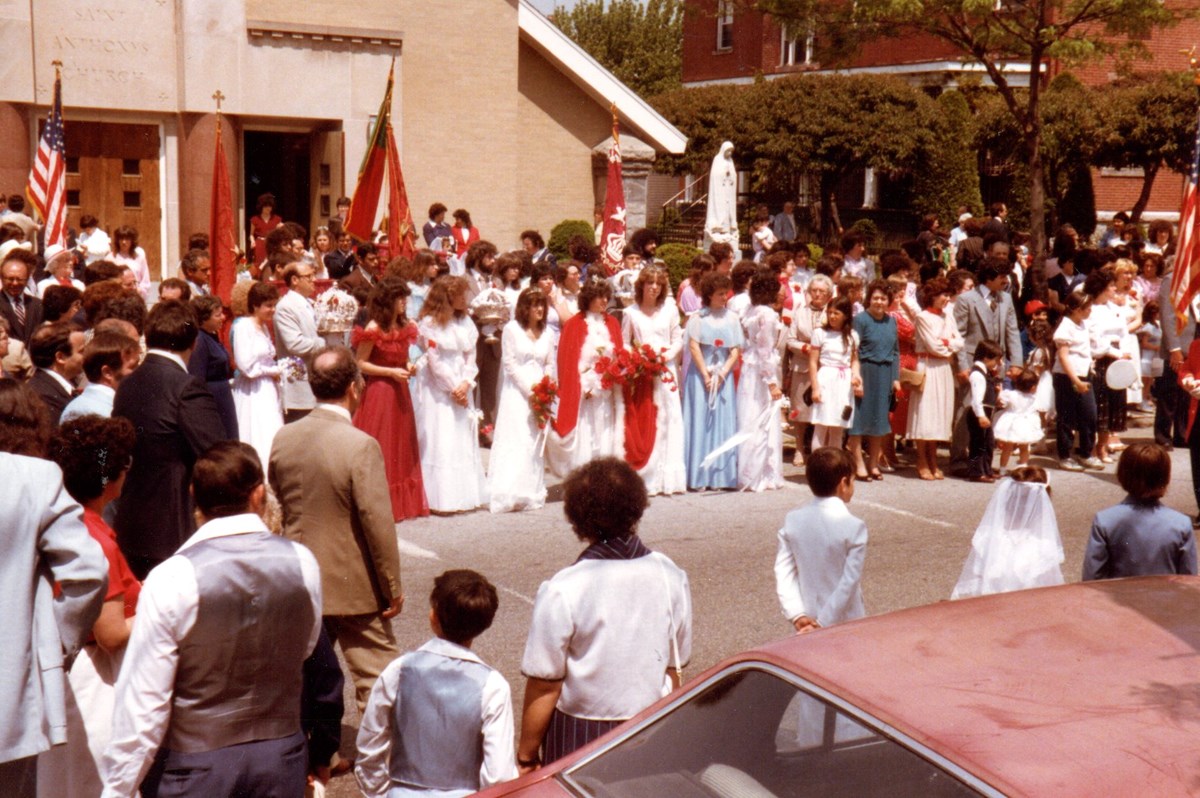 Image by Domingos Reis
Image by Domingos Reis
Local amateur photographer Domingos Reis captured on film many of the Portuguese festivals in Lowell in the 1980s, including the annual Holy Ghost festival and the crowning of the Holy Ghost Queen in front of St. Anthony’s Church. This younger generation of Portuguese, who were children of the Second Great Wave of Immigrants, has largely moved out of the Back Central neighborhood.
Apart from the commercial buildings of Central Plaza and the blocks of apartments at the Bishop Markham project, as well as the rerouting of Gorham Street in the late 1970s, followed by the Crescent housing development along renamed Veteran’s Way in 1985, very little new construction had occurred in much of Back Central since the late-19th century. Yet, by the early 2000s, the neighborhood was markedly changing. The second generation of Portuguese, that is, the children of the “Second Great Wave” of immigrants that had ended by the 1980s, was not settling in Back Central. They chose instead to live in other areas once they moved out of their parents’ homes. And Portuguese parents as well were leaving the neighborhood.
Joining the increasingly aging Portuguese residents in Back Central were members of the Spanish-speaking community, including Puerto Ricans and some Dominicans. In addition, there were Southeast Asians, notably Cambodians, whose families had fled the genocidal regime of Khmer Rouge that emerged in the wake of the United States war in Vietnam. While, this influx of newcomers to Lowell added to the ethnic diversity of Back Central, a majority, just as in the early 20th century, rented their homes and many were struggling financially to make ends meet. Many long-term residents who remained in the neighborhood viewed these changes with apprehension.
Portuguese culture in Lowell was also undergoing a shift. For a few years, beginning as early as the 1980s, but growing more substantially in the early 2000s, Brazilians settled in Back Central. To some extent there was a joining together of Portuguese from the Atlantic Islands and the mainland, with those from Brazil, especially in local social clubs and on soccer teams. There was even a movement among some parishioners at St. Anthony’s to accommodate Brazilians who were displaced with closing of Sacred Heart Parish in South Lowell. But there was also opposition by some long-time parishioners to what they believed were threats posed by Brazilians to deeply embedded cultural and religious traditions. In the end, most of the city’s Brazilian Catholics chose St. Marie’s Church in South Lowell.
Back Central today is a neighborhood in transition. The economic shock waves that reverberated throughout Lowell from the Financial Crisis of 2008-09 further stressed many residents, especially wage earners. And the Brazilian population that was rapidly growing nearly as quickly declined, especially in the wake of intensified federal enforcement of immigration laws coupled with a growing scarcity of jobs. Membership in the neighborhood’s two Portuguese clubs continues to decline to such an extent that there is some discussion of merging them into one. A former president of the Holy Ghost Society, which is celebrating its 100th anniversary of incorporation in 2023, observed that the number of non-dues paying lifetime members nearly outnumbered the regular members. While history provides a measure of context for current conditions and allows for an exploration of past events and socio-cultural patterns that attended social and demographic change, it does not with any high degree of certainty predict what the future holds for the neighborhood and its people.
